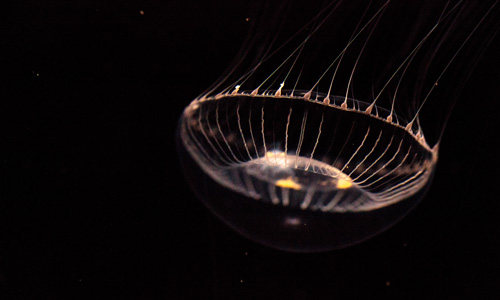Did you know that research on sea jellies has resulted in numerous scientific breakthroughs that have directly benefited humans? Indeed two Nobel prizes have been awarded for research on sea jellies. The first was the Nobel Prize for Medicine, awarded to Dr Charles Richet in 1913 for the discovery of anaphylaxis, the severe allergic reaction experienced by some people when they encounter certain allergens, such as particular types of food (e.g. peanuts) or toxins (e.g. bee stings). Dr Richet discovered anaphylaxis by studying the responses of dogs to the venom of the Portuguese Man of War (Physalia physalis), research that he started during a cruise on the yacht of Prince Albert of Monaco!
 Charles Richet, winner of the 1913 Nobel Prize for Medicine.
Charles Richet, winner of the 1913 Nobel Prize for Medicine.
 The Green Fluorescent Protein (GFP) was first identified from the bioluminescent Crystal Jelly, Aequorea victoria.
The Green Fluorescent Protein (GFP) was first identified from the bioluminescent Crystal Jelly, Aequorea victoria.
The second Nobel Prize (this time for Chemistry) was awarded in 2008 to Osamu Shimomura, Martin Calfie and Roger Tsien, the chemists who discovered a green fluorescent protein (commonly known as the ‘GFP’) and developed its use in biomedical science. This protein was first discovered when Osamu Shimomura studied bioluminescence (the chemical reactions in living organisms that generate light) in the Crystal Jelly, Aequorea victoria. The GFP is important because it can be chemically attached to other proteins and because it fluoresces (emits light) it can act as a type of chemical tag, allowing researchers to track how proteins move throughout a body. The GFP has enabled researchers to study things such as the spread of cancer cells and how nerve cells form in the brain.